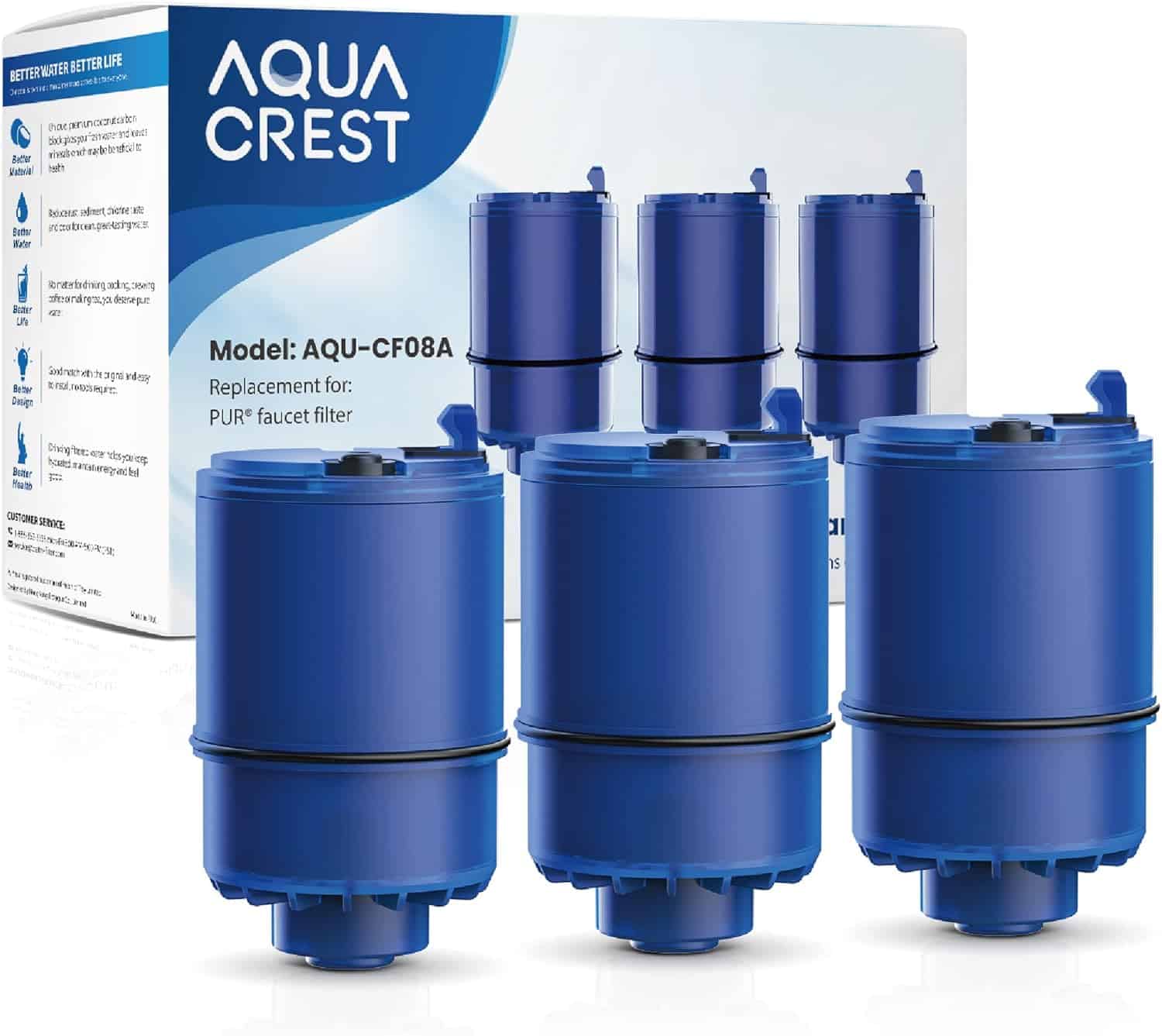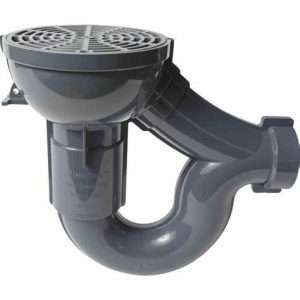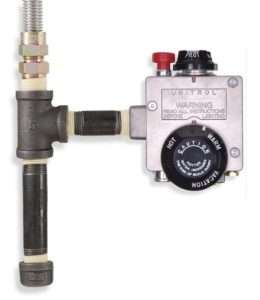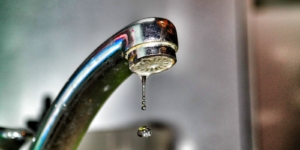What Causes Loss of Water Pressure in the Bathroom Sink?

Experiencing a sudden loss of water pressure in your bathroom sink? You’re not alone. This common issue can be caused by a variety of factors. From clogged pipes to faulty fixtures, there’s a lot that can go wrong. But don’t worry. Understanding the root cause is the first step towards finding a solution. Here’s a brief look at some of the most common culprits.
Overview of Water Pressure
Water pressure is a crucial factor in maintaining a well-functioning bathroom sink. It determines the force at which water flows through the pipes and into the sink, allowing us to perform various tasks such as washing hands, brushing teeth, or even rinsing our faces. In this section, we will explore the definition of water pressure and highlight the importance of having adequate water pressure in your bathroom sink.
Definition of Water Pressure
Water pressure refers to the force exerted by water as it flows through pipes and comes out of faucets. It is measured in pounds per square inch (PSI) and determines how effectively water can be delivered to different fixtures in your home, including the bathroom sink. Think of it as the energy that pushes water through the plumbing system and into your sink.
Importance of Adequate Water Pressure in Bathroom Sink
Having adequate water pressure in your bathroom sink is essential for several reasons. Let’s explore some of the key benefits:
- Efficient Daily Tasks: Adequate water pressure ensures a steady and robust flow of water, making everyday tasks in the bathroom more efficient. Whether you’re washing your hands, rinsing your face, or filling up a glass of water, having sufficient pressure allows you to complete these tasks quickly and effectively.
- Improved Hygiene: Proper water pressure enables thorough cleaning and rinsing. Whether you’re brushing your teeth or washing your face, a strong stream of water ensures that you can remove dirt, debris, and bacteria effectively, promoting better hygiene practices.
- Comfortable Experience: Imagine trying to wash your hands under a feeble trickle of water. Insufficient water pressure can make the experience frustrating and time-consuming. With adequate pressure, you can enjoy a comfortable and convenient experience in the bathroom, allowing you to get on with your day seamlessly.
- Prevention of Clogs: Low water pressure can often be a sign of clogged pipes or debris buildup within the plumbing system. By maintaining adequate pressure, you can help prevent clogs from occurring, ensuring smooth water flow and minimizing the chances of costly repairs in the future.
- Preservation of Fixtures: Insufficient water pressure can place additional strain on your bathroom sink fixtures, such as faucets and valves. Over time, this strain can lead to wear and tear, causing leaks or other plumbing issues. By maintaining adequate pressure, you can extend the lifespan of your fixtures and avoid unnecessary repairs.
Common Causes of Loss of Water Pressure
If you’ve noticed a sudden decrease in water pressure in your bathroom sink, it can be quite frustrating. Understanding the common causes of this issue can help you troubleshoot and resolve the problem quickly. In this section, we will explore the various factors that can lead to a loss of water pressure in your bathroom sink.
Clogged Faucet Aerator
One common culprit behind low water pressure in bathroom sinks is a clogged faucet aerator. Over time, mineral deposits and debris can accumulate in the aerator, obstructing the flow of water. To check if this is the cause of your low water pressure, unscrew the aerator from the faucet spout and examine it for any buildup. If you notice any blockages, clean the aerator thoroughly or consider replacing it if necessary.
Mineral Buildup in Pipes
Another reason for reduced water pressure is mineral buildup in your pipes. Over time, minerals like calcium and magnesium can accumulate inside the pipes, narrowing the passages through which water can flow. This issue is particularly common in areas with hard water. If you suspect mineral buildup as the culprit, consider contacting a professional plumber who can flush out the pipes or recommend appropriate treatments to resolve the issue.
Leaks in Pipes or Faucet
Leaky pipes or faucets can also contribute to a loss of water pressure. Even a small leak can significantly impact the overall water flow. Inspect your pipes and faucet thoroughly for any signs of leakage, such as dampness, discoloration, or dripping water. If you find any leaks, repair or replace the affected components promptly to restore the water pressure in your bathroom sink.
Issues with Water Supply Line
Problems with the water supply line can also lead to diminished water pressure. If there is a blockage or damage in the main water supply line, it can affect the flow of water to your bathroom sink. To determine if this is the cause, check with your water utility provider to see if there are any known issues with the supply line in your area. If not, it may be necessary to call a professional plumber to inspect and address the problem.
Problems with Pressure Regulator
A faulty pressure regulator can be another culprit behind low water pressure in your bathroom sink. The pressure regulator is responsible for maintaining a consistent water pressure throughout your plumbing system. If it malfunctions or becomes damaged, it can disrupt the water flow to your sink. Consider consulting a plumber to inspect and potentially replace the pressure regulator if you suspect it may be causing the issue.
Clogged Faucet Aerator
The faucet aerator is an essential part of your bathroom sink that plays a key role in maintaining water pressure. It is a small device that screws onto the end of the faucet and contains a fine mesh screen or a series of perforated holes. Its purpose is to regulate the flow of water and add air to the stream, which helps reduce splashing and conserve water.
Explanation of Faucet Aerator
The faucet aerator serves two main functions. First, it restricts the flow of water, creating a consistently steady stream, even if the water pressure is high. Second, it mixes air with the water, producing a soft and aerated flow that feels gentle on the skin. This not only enhances the overall experience but also conserves water by reducing the amount of water used per minute.
How Clogs Develop in Faucet Aerator
Over time, mineral deposits, sediment, and debris can accumulate in the faucet aerator, leading to clogs. These particles often come from the water supply, particularly in areas with hard water. When the flow of water encounters these obstructions, it can cause a significant reduction in water pressure.
Furthermore, if you have old pipes or experience plumbing issues, these particles can break loose and find their way into the aerator, exacerbating the problem. It is important to note that clogs can occur in both the hot and cold water aerators, so it’s crucial to inspect and clean both.
Methods to Clean or Replace Aerator
Fortunately, cleaning or replacing a clogged faucet aerator is a relatively simple task that can restore your water pressure. Here are a few methods you can try:
- Cleaning with Vinegar Solution: Start by unscrewing the aerator from the faucet using a pair of pliers or by hand if possible. Soak the aerator in a bowl of vinegar solution for about an hour to dissolve mineral deposits. Gently scrub away any remaining debris using an old toothbrush. Rinse the aerator thoroughly and screw it back onto the faucet.
- Using a Needle or Toothpick: If the clog is minor, you may be able to dislodge it by carefully inserting a needle or toothpick into the holes of the aerator. Gently wiggle the needle or toothpick to loosen any debris, then turn on the water to flush it out.
- Replacing the Aerator: If cleaning doesn’t restore the water pressure, it may be necessary to replace the aerator altogether. You can purchase a new aerator from your local hardware store or online. When selecting a replacement, ensure that it matches the size and threading of your faucet.
Mineral Buildup in Pipes
When it comes to understanding the causes of low water pressure in your bathroom sink, one common culprit is mineral buildup in the pipes. This phenomenon occurs over time as minerals in the water, such as calcium and magnesium, accumulate and form deposits within the pipes. In this section, we will delve into the explanation of mineral buildup, how it affects water pressure, and methods to effectively remove it.
Explanation of Mineral Buildup
Mineral buildup, also known as limescale or scale deposits, is a result of hard water. Hard water contains a high concentration of minerals that are dissolved in the water supply. As the water flows through your pipes, some of these minerals start to accumulate and adhere to the inner walls of the pipes. Over time, these deposits can become thick and restrict the flow of water, leading to a decrease in water pressure.
How Mineral Buildup Affects Water Pressure
The accumulation of mineral deposits in your pipes can have a significant impact on the water pressure in your bathroom sink. As the deposits gradually build up, they narrow the space through which the water can flow. This reduction in the pipe’s diameter restricts the volume of water that can pass through, resulting in decreased water pressure.
Methods to Remove Mineral Buildup
Fortunately, there are several methods you can employ to effectively remove mineral buildup from your pipes and restore water pressure in your bathroom sink. Here are a few options to consider:
- Vinegar Solution: Vinegar is a natural acid that can dissolve mineral deposits. Fill a plastic bag with vinegar and secure it around the affected faucet or showerhead using a rubber band. Leave it overnight to allow the vinegar to break down the deposits. In the morning, remove the bag and run hot water through the faucet to flush out the loosened minerals.
- Commercial Descaling Products: There are various descaling products available in the market specifically designed to remove mineral buildup. Follow the instructions provided by the manufacturer to effectively use these products. Remember to take appropriate safety precautions and ensure proper ventilation when working with chemicals.
- Mechanical Removal: For stubborn mineral deposits, you may need to physically remove them. Disconnecting the affected pipes and using a wire brush or pipe cleaner can help dislodge the buildup. Be cautious when attempting this method and seek professional assistance if needed.
Leaking Pipes or Faucet: What Causes a Loss of Water Pressure in Your Bathroom Sink?
If you’re experiencing a loss of water pressure in your bathroom sink, it can be frustrating and inconvenient. One of the common culprits behind this issue is leaks in the pipes or faucet. Understanding the signs, causes, and repair methods for these leaks can help you address the problem effectively. In this section, we will explore the signs of leaks, the causes behind them, and how you can go about repairing them.
Signs of Leaks in Pipes or Faucet
Detecting leaks in your bathroom sink’s pipes or faucet is crucial in resolving the issue. Here are some common signs that indicate the presence of leaks:
- Dripping or pooling water: If you notice consistent dripping or pooling of water around your sink, it may indicate a leak in the pipes or faucet. Check for any visible signs of water collecting on the floor or inside cabinets.
- Water stains or discoloration: Leaks often lead to water stains or discoloration on the walls, floor, or sink itself. Look for any unusual spots or discoloration that could signify a leak.
- Mold or mildew growth: Excessive moisture caused by leaks can create a favorable environment for mold and mildew to thrive. Keep an eye out for any signs of mold growth near your sink.
- Unexplained water bill increase: If your water bill suddenly spikes without any apparent reason, it could be due to leaks in your bathroom sink. A hidden leak can waste a significant amount of water, leading to higher bills.
Causes of Leaks in Pipes or Faucet
Understanding the underlying causes of leaks in your bathroom sink can help you prevent them in the future. Here are some common causes:
- Worn-out seals or gaskets: Over time, the seals and gaskets in your faucet can deteriorate, leading to leaks. These components may need replacement to restore the proper function of your sink.
- Loose or damaged pipes: Pipes can become loose or damaged due to corrosion, age, or accidental impacts. When pipes develop cracks or leaks, it can result in a loss of water pressure.
- Improper installation: If your sink or faucet wasn’t installed correctly, it can cause leaks. Faulty connections or missing seals can lead to water escaping from the pipes.
Repairing Leaks in Pipes or Faucet
Once you’ve identified a leak in your bathroom sink’s pipes or faucet, it’s important to take prompt action to repair it. Here are some steps you can follow:
- Turn off the water supply: Before beginning any repairs, turn off the water supply to your bathroom sink. This will prevent further water damage and make the repair process safer.
- Inspect and tighten connections: Check all the connections in your sink’s plumbing system, including the faucet, supply lines, and drain pipes. Tighten any loose connections using an appropriate tool.
- Replace damaged components: If you find any damaged seals, gaskets, or pipes, replace them with new ones. Ensure that you use the correct size and type of components for your specific sink model.
- Call a professional plumber: If you’re unsure about handling the repairs yourself or if the issue persists after your attempts, it’s best to consult a professional plumber. They have the expertise and tools to diagnose and fix complex leaks effectively.
Issues with Water Supply Line
The water supply line in your bathroom sink plays a crucial role in delivering water to your faucet. However, like any other component in a plumbing system, it can encounter issues that lead to a loss of water pressure. In this section, we will explore the causes of water supply line issues and provide you with methods to fix them.
Causes of Water Supply Line Issues
- Clogs and Blockages: Over time, sediment, minerals, and debris can accumulate in the water supply line, causing blockages. These blockages restrict the flow of water and result in reduced water pressure. Common culprits include mineral buildup from hard water or small objects that accidentally find their way into the line.
- Corrosion: The water supply line is typically made of metal, such as copper or galvanized steel. However, these materials can corrode over time due to exposure to water and other environmental factors. Corrosion can create blockages or even cause the line to develop leaks, leading to a decrease in water pressure.
- Leaks: Leaks in the water supply line can occur due to various reasons, such as loose fittings, cracks, or damage to the line itself. Even small leaks can result in a noticeable loss of water pressure. It’s important to promptly address any leaks to prevent further damage and maintain optimal water pressure.
- Pipe Size and Design: In some cases, the water supply line may not have been properly sized or designed to handle the water demand of your bathroom fixtures. If the line is too narrow or has too many bends, it can hinder the flow of water and cause a decrease in water pressure.
Methods to Fix Water Supply Line Issues
- Clearing Blockages: If the water supply line is clogged or blocked, you can try using a plunger or plumbing snake to remove the obstruction. Alternatively, you can disconnect the line from the faucet and flush it out with water to dislodge any debris or mineral buildup. Regular maintenance, such as using a water softener or installing a sediment filter, can also help prevent future blockages.
- Addressing Corrosion: If corrosion is the cause of your water supply line issues, you may need to replace the affected section of the line. It’s crucial to consult a professional plumber who can assess the extent of the corrosion and recommend the appropriate repairs or replacements.
- Repairing Leaks: To fix leaks in the water supply line, you can start by tightening any loose fittings or connections. If the line itself is damaged, it may need to be replaced. Again, it’s best to seek the expertise of a licensed plumber to ensure proper repairs and prevent further issues.
- Upgrading the Line: In cases where the water supply line is undersized or poorly designed, you may need to consider upgrading to a larger diameter line or reconfiguring its path. A professional plumber can assess your specific needs and make appropriate recommendations to improve water pressure in your bathroom sink.
Problems with Pressure Regulator
In the realm of plumbing issues, a loss of water pressure in the bathroom sink can be a frustrating experience. When you turn on the faucet, expecting a steady stream of water, and instead are met with a weak trickle, it can leave you scratching your head. One potential cause for this problem is an issue with the pressure regulator. In this section, we will explore the function of the pressure regulator, signs that indicate problems with it, and the possible solutions for repairing or replacing it.
Function of Pressure Regulator
Before we delve into the signs of pressure regulator issues, it’s essential to understand the role of this crucial component. The pressure regulator, often located near the main water supply line, is responsible for maintaining a consistent water pressure throughout your home. It acts as a control valve, ensuring that the water pressure doesn’t exceed a certain threshold. By regulating the pressure, it protects your plumbing system from excessive strain, reducing the risk of leaks, burst pipes, and other potential damages.
Signs of Pressure Regulator Issues
When the pressure regulator malfunctions, it may manifest in several ways. By recognizing these signs, you can identify whether a faulty pressure regulator is the culprit behind your bathroom sink’s loss of water pressure:
- Fluctuating water pressure: If you notice inconsistent water pressure, with the flow varying between strong and weak, it could indicate a problem with the pressure regulator.
- Low water pressure in multiple fixtures: If the loss of water pressure is not limited to just the bathroom sink but is also affecting other faucets and fixtures in your home, it suggests a potential issue with the pressure regulator.
- High water pressure: Conversely, if you experience abnormally high water pressure, it could also be a sign that the pressure regulator is not functioning correctly. This can put excessive stress on your plumbing system and lead to leaks or bursts.
- Water hammering noises: If you hear banging or knocking sounds when turning on the faucet, it could be due to fluctuating water pressure caused by a faulty pressure regulator.
Repairing or Replacing Pressure Regulator
If you suspect that your pressure regulator is the culprit behind the loss of water pressure in your bathroom sink, it’s important to take action. Depending on the severity of the issue, you may either need to repair or replace the pressure regulator. Here are the possible solutions:
- Cleaning or adjusting: In some cases, the pressure regulator may simply require cleaning or adjustment. Sediment or debris could be clogging the valve, impeding its proper functioning. A professional plumber can clean or make necessary adjustments to restore the pressure regulator’s effectiveness.
- Replacing faulty parts: If the pressure regulator has worn-out components or is irreparable, it may be necessary to replace certain parts. A skilled plumber can identify the specific parts causing the issue and replace them accordingly.
- Full pressure regulator replacement: In more severe cases, where the pressure regulator is beyond repair, a complete replacement may be necessary. A professional plumber can install a new pressure regulator that meets your home’s specific requirements, ensuring optimal water pressure throughout your plumbing system.
Conclusion
A loss of water pressure in a bathroom sink can be caused by a variety of factors. First, it is important to check for any clogs or blockages in the faucet aerator or the pipes leading to the sink. These can restrict the flow of water and result in reduced pressure. Additionally, a malfunctioning or worn-out pressure regulator valve may also be responsible for the decrease in water pressure. Finally, it is worth considering the overall water supply system in the house, as issues with the main water line can affect the pressure in all fixtures, including the bathroom sink. By identifying and addressing these potential causes, it is possible to restore the desired water pressure and ensure optimal performance of the bathroom sink.







